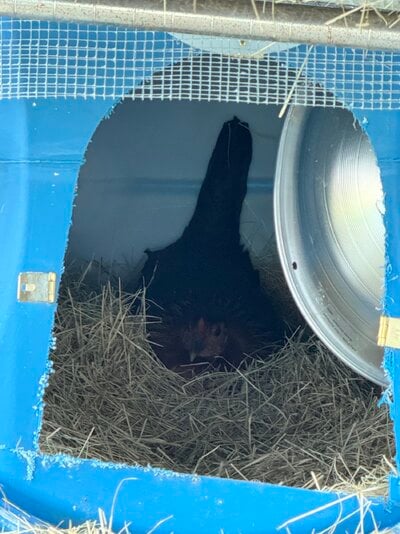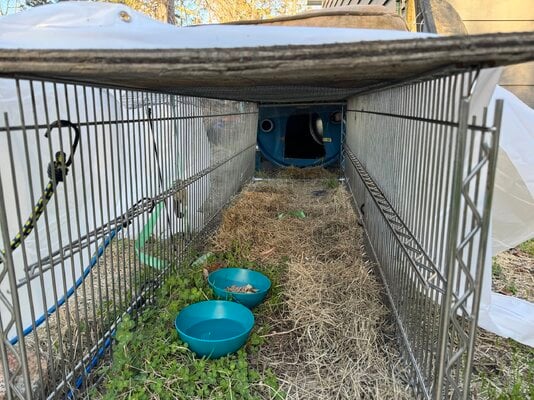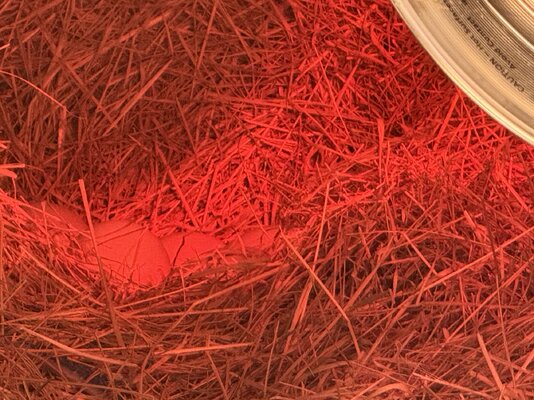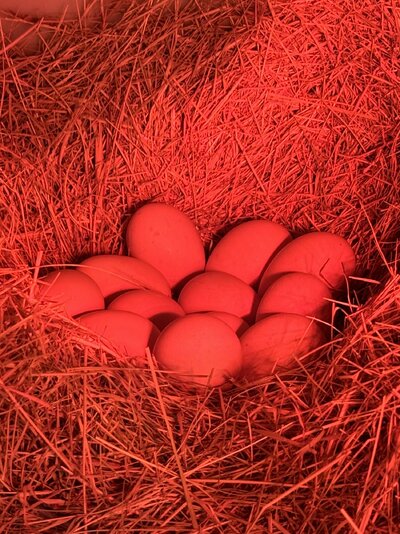tiffanylongwith
Chirping
- Feb 19, 2024
- 16
- 76
- 54
We have acquired a Red Jungle Fowl, she just showed up in our backyard one day and never left. Since then, we’ve been feeding her pellets. In the winter it dropped to low teens so we made a decent makeshift coop to help keep her warm and safer from predators. She now prefers to lay her eggs in here. She goes in her coop when she wants but also explores the outdoors on her own a lot. We do have a backyard neighbor with a rooster that she also could have access to. I’m new to chickens and have a few questions.
1. Will she mind if we take her eggs? Is it okay to leave them there with possibility of breaking and attracting predators? With her being a wild chicken, Im sure she isn’t used to her eggs being taken and I don’t want to make her feel unsafe.
2. She laid around 12 eggs in 24 hours. Is the normal for a jungle fowl? Is she okay? I’ve read that they’re only supposed to lay 10-15 a year in clutches of 4-7. I check her area regularly to ensure no predators have come in. I was locking her cage up at night and I saw one egg (but from my view it’s a bit difficult to see until my boyfriend comes home and can move part of her run out of the way so I can get her to her nest. The next morning she laid in there for about 7 hours and when we looked in her cage once she left there were 12 eggs. The day after that she laid 2 more. For the next couple days she was super hungry too. Could the increased laying mean anything? Possibly fertilization? Is there a way to know if they are fertilized? What could explain this surge of egg laying?
3. She’s now been in her coop for the longest she has ever been by choice about 36 hours now and at about 24 without seeing her eat or drink. How long before intervening? And with her being wild and not easy to touch or catch typically, how would I be able to help her?
Sorry this is long, I’m new and feel like some of my questions could vary with her being a wild chicken.
I also included pictures of her makeshift coops if you have any notes. Yes we are aware that the light can be a fire hazard, we regularly check the hay and move it when needed and her coop is placed so that we can see it in most rooms of the house. Will eventually get a motion camera for it too.


1. Will she mind if we take her eggs? Is it okay to leave them there with possibility of breaking and attracting predators? With her being a wild chicken, Im sure she isn’t used to her eggs being taken and I don’t want to make her feel unsafe.
2. She laid around 12 eggs in 24 hours. Is the normal for a jungle fowl? Is she okay? I’ve read that they’re only supposed to lay 10-15 a year in clutches of 4-7. I check her area regularly to ensure no predators have come in. I was locking her cage up at night and I saw one egg (but from my view it’s a bit difficult to see until my boyfriend comes home and can move part of her run out of the way so I can get her to her nest. The next morning she laid in there for about 7 hours and when we looked in her cage once she left there were 12 eggs. The day after that she laid 2 more. For the next couple days she was super hungry too. Could the increased laying mean anything? Possibly fertilization? Is there a way to know if they are fertilized? What could explain this surge of egg laying?
3. She’s now been in her coop for the longest she has ever been by choice about 36 hours now and at about 24 without seeing her eat or drink. How long before intervening? And with her being wild and not easy to touch or catch typically, how would I be able to help her?
Sorry this is long, I’m new and feel like some of my questions could vary with her being a wild chicken.
I also included pictures of her makeshift coops if you have any notes. Yes we are aware that the light can be a fire hazard, we regularly check the hay and move it when needed and her coop is placed so that we can see it in most rooms of the house. Will eventually get a motion camera for it too.
Attachments
Last edited:








